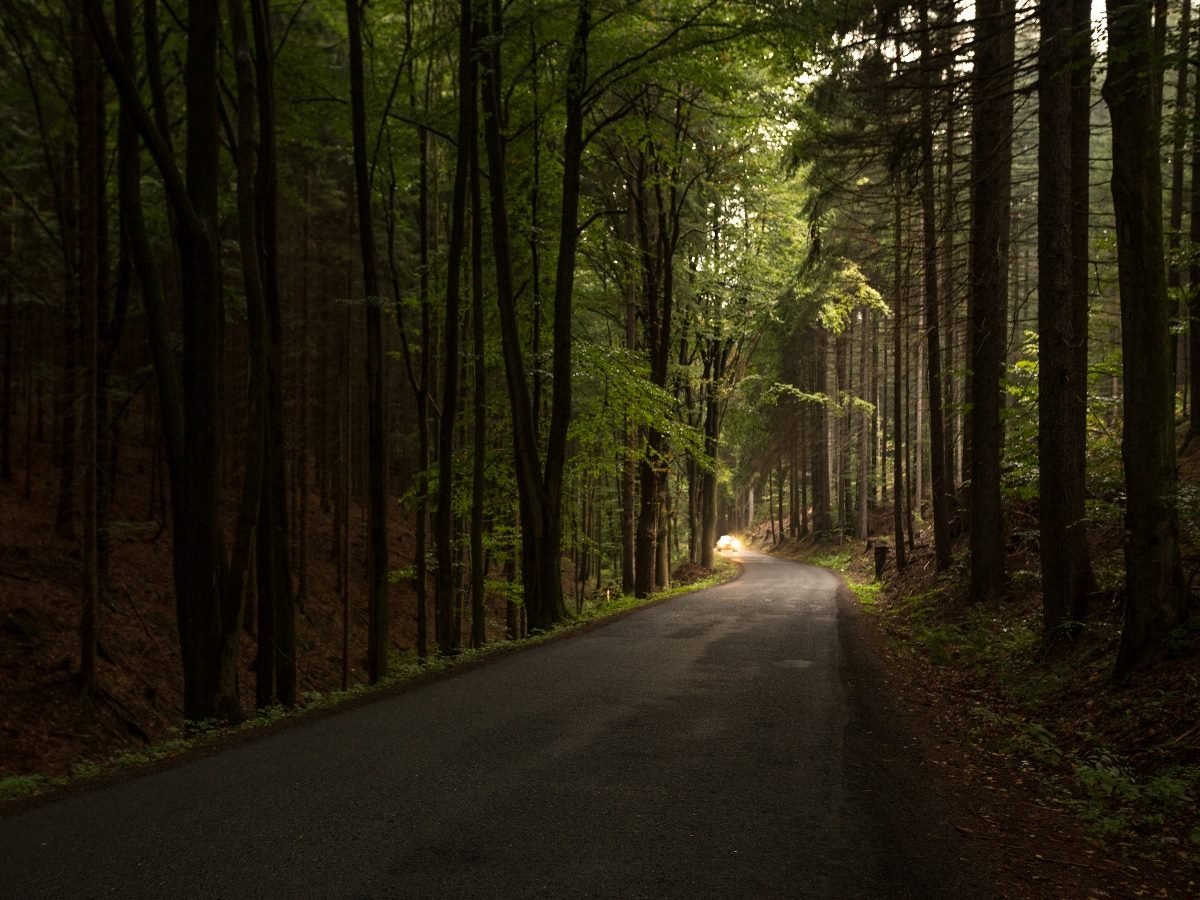Product Overview and Core Value Proposition
Explore how the Qdrant Search Engine leverages AI to enhance search capabilities, offering significant benefits over traditional search engines.
Qdrant is an open-source vector similarity search engine and high-performance vector database designed for efficiently handling high-dimensional data like embeddings from text, images, and other data types. It is optimized for AI and machine learning workloads, particularly in applications requiring semantic search, recommendation systems, and advanced retrieval use cases.
- High-dimensional vector search using HNSW graphs and Product Quantization.
- Real-time updates with on-the-fly indexing, insertion, updating, and deletion.
- Scalability through horizontal scaling, replication, and sharding.
- Flexible deployment options including local, cloud, and hybrid environments.
- Customizable similarity metrics for personalized retrieval tasks.
- Advanced compression and quantization techniques.
- API access with RESTful API and Python client support.
- Enterprise security features with robust access controls and data isolation.
- Payload and filtering capabilities for complex query conditions.
- Sparse vector support for modern embedding techniques.
Qdrant is built in Rust, ensuring high performance and reliability.
AI-Enhanced Search Capabilities
Qdrant leverages AI to significantly enhance search capabilities, providing faster and more relevant results compared to traditional search engines. By utilizing advanced indexing algorithms and customizable similarity metrics, Qdrant offers precise and scalable semantic search solutions.
Core Value Proposition
The core value proposition of Qdrant lies in its ability to efficiently manage and search high-dimensional data, making it an ideal choice for applications that demand fast and accurate semantic searches. Its open-source nature and active community support further enhance its appeal to developers and businesses.
Unique Selling Points
Qdrant's unique selling points include its real-time updates, scalability, flexible deployment options, and advanced filtering capabilities. These features make it a preferred choice for developers and businesses looking to implement efficient and scalable search solutions.
Qdrant supports both dense and sparse vector representations, enhancing compatibility with modern embedding techniques.
Key Features and Capabilities
Explore the powerful features and technological innovations of the Qdrant Search Engine that enhance search efficiency and application.
Qdrant Search Engine is designed to elevate search efficiency with its high-performance and scalable features. It is particularly effective for AI applications due to its innovative use of vector search technology.
The image below highlights strategic insights into leveraging large language models (LLMs) for go-to-market strategies, relevant to understanding the potential of platforms like Qdrant.
Qdrant's robust architecture and feature set make it a compelling choice for businesses seeking efficient, scalable, and reliable search solutions in various AI-driven scenarios.
Feature-Benefit Mapping and Innovative Technologies
| Feature | Benefit | Innovative Technology |
|---|---|---|
| High-Performance Search | Quick and accurate search results on large datasets | HNSW Algorithm |
| Filtering and Hybrid Search | Complex queries with minimal performance impact | JSON payloads |
| Hybrid Search with Sparse Vectors | Improved relevance for diverse query types | Dense and sparse vector combination |
| Vector Quantization | Reduced RAM usage with maintained precision | Dynamic quantization |
| Scalability | Handles large-scale deployments with ease | Sharding and replication |

Innovative Features of Qdrant
Qdrant is particularly well-suited for applications such as neural search, semantic search, and recommendation systems. Its ability to handle multimodal data and provide robust API support makes it ideal for businesses looking to implement advanced search capabilities.
Use Cases and Target Users
Exploring the primary use cases and target industries for Qdrant Search Engine, highlighting its capabilities in advanced search, recommendation systems, and AI applications.
Qdrant Search Engine is a powerful tool designed to enhance search functionalities across various industries. Its capabilities in handling high-dimensional or unstructured data make it a preferred choice for businesses aiming to improve search accuracy and efficiency.
The image below illustrates the transformative role of vector databases in modern AI search applications.
By leveraging Qdrant's advanced features, organizations can achieve high-speed, low-latency search solutions tailored to their specific needs.

Primary Use Cases
- Advanced Semantic Search: Facilitates similarity searches across text, images, and multimodal data.
- Personalized Recommendation Systems: Provides real-time, responsive product and content recommendations.
- Retrieval-Augmented Generation (RAG): Enhances generative AI models by retrieving relevant context.
- Anomaly Detection & Data Analysis: Detects outliers and unusual patterns in large datasets.
- AI Agent Platforms: Powers complex, multi-agent interactions in enterprise environments.
Target Industries
- E-commerce: Optimizes product recommendations and search functionalities.
- Telecommunications: Supports customer service and multi-agent platforms.
- Finance: Enhances fraud detection and financial data analysis.
- Media and Entertainment: Improves content recommendations and search experiences.
Practical Application Examples
- Tripadvisor uses Qdrant to enhance generative AI search, increasing revenue through personalized trip planning.
- HubSpot applies Qdrant for contextual content retrieval, boosting user engagement.
- Deutsche Telekom deploys Qdrant for efficient enterprise conversations and rapid agent development.
- Sprinklr leverages Qdrant to improve customer experience management and reduce operational costs.
Technical Specifications and Architecture
A detailed analysis of the technical specifications and architecture of the Qdrant Search Engine, focusing on its capabilities, technologies, and architecture to support scalability and reliability.
Qdrant is a high-performance vector database and similarity search engine that offers advanced features for AI, machine learning, and semantic search applications. Its architecture and technical specifications are designed to handle large-scale data efficiently.
Here is an image that highlights Qdrant's presence on PyPI, emphasizing its integration capabilities with Python ecosystems.
The combination of these technologies and architectural choices allows Qdrant to achieve high scalability and reliability, making it a robust choice for handling large-scale, complex vector search tasks.
System Architecture and Technology Stack
| Component | Technology | Purpose |
|---|---|---|
| Programming Language | Rust | Ensures speed and reliability |
| Search Algorithm | HNSW Graph | Facilitates fast similarity searches |
| Vector Support | Dense and Sparse | Enables hybrid search capabilities |
| Storage Options | In-memory and Memmap | Offers flexibility in data storage |
| Hardware Optimization | SIMD and io_uring | Enhances CPU and disk I/O performance |
| API & Integrations | OpenAPI v3 | Supports automated client library generation |
| Deployment | Docker/Kubernetes | Facilitates local and cloud deployments |
| Security | Enterprise-grade access control | Ensures data security and isolation |

Technical Specifications
Qdrant is built using Rust, a language known for its performance and safety, which is critical for handling large-scale vector data. It supports dense and sparse vectors, allowing for hybrid searches that combine semantic embeddings with keyword-based retrieval. The HNSW algorithm is employed for approximate nearest neighbor search, ensuring quick and efficient similarity searches.
System Architecture
The architecture of Qdrant is designed to support massive scalability and reliability. It offers distributed and cloud-native features such as horizontal scaling through sharding and replication. The storage system supports both in-memory and memory-mapped files, offering flexibility based on the use case requirements.
Scalability and Reliability
Qdrant excels in scalability and reliability, offering zero-downtime upgrades and strong data durability through write-ahead logging. It also boasts high request per second (RPS) capabilities and sub-millisecond latency, making it a top choice for performance-critical applications.
Integration Ecosystem and APIs
Qdrant offers extensive integration capabilities with various embedding providers, data pipeline tools, cloud deployments, and third-party platforms, supported by comprehensive APIs and SDKs.
Qdrant's integration ecosystem is robust, supporting a wide range of embedding providers, data pipeline tools, and platforms. This flexibility allows seamless incorporation into existing systems and enhances the capabilities of AI applications. With support for popular embeddings such as Cohere, OpenAI, and Google Gemini, Qdrant ensures compatibility with major AI frameworks.
Additionally, Qdrant offers APIs and SDKs in multiple programming languages, facilitating easy integration. The REST and gRPC APIs cater to different operational needs, from simple HTTP requests to high-throughput operations. Official client libraries are available for Python, TypeScript, Rust, Go, .NET, and Java, providing developers with the tools needed for efficient integration and deployment.
Furthermore, third-party platform integrations enable the use of Qdrant as a vector database in applications like Haystack and FiftyOne, expanding its utility in various AI and machine learning workflows.
- Embedding Providers: Cohere, Google Gemini, OpenAI, Aleph Alpha, Jina AI, AWS Bedrock
- Frameworks & Tools: LangChain, LlamaIndex, Airbyte, Unstructured, DocArray, AutoGen
- APIs and SDKs: REST API, gRPC API, Python, TypeScript, Rust, Go, .NET, Java
- Third-party Platforms: Vectorize, Apify, FiftyOne, Haystack
Qdrant's integration capabilities make it a versatile choice for modern AI applications, supporting a wide array of platforms and tools.
Integration Capabilities
Qdrant's integration options are designed to cater to various needs, ensuring compatibility with leading AI technologies. The platform's support for multiple embedding providers and data pipeline tools allows it to be integrated into diverse AI workflows with ease.
Available APIs
Qdrant provides robust API options including REST and gRPC, ensuring flexibility in operations. The availability of client libraries in multiple languages enhances integration possibilities for developers.
Seamless Integration Examples
Examples of seamless integration include the use of Qdrant in retrieval-augmented generation (RAG) for large language models, real-time AI agent vector searches, and multi-modal data management. These use cases demonstrate the platform's adaptability and effectiveness in various applications.
Pricing Structure and Plans
Explore the pricing options for Qdrant Search Engine, including free and paid tiers, and learn how to choose the right plan for your business.
Qdrant offers a flexible pricing structure to accommodate various needs, from individual developers to large enterprises. The Free Tier provides a cost-free entry point for development and small projects with a 1GB cluster. For more advanced requirements, the Managed Cloud, Hybrid Cloud, and Private Cloud options offer scalable solutions with varying degrees of control and management.
The Managed Cloud plan starts at $0.014 per hour, translating to approximately $10 per month, depending on resource usage. It is ideal for businesses seeking a fully managed service with scalability across multiple clouds. For those preferring to manage their own infrastructure, the Hybrid Cloud offers similar pricing with the added flexibility of deploying on AWS, GCP, Azure, or on-premise environments.
Enterprises needing complete data control can opt for the Private Cloud, with custom pricing available upon request. This plan includes premium support and security features, making it suitable for organizations with stringent data sovereignty requirements.
Qdrant also provides marketplace pricing on platforms like AWS, where costs are usage-based, starting at around $0.01 per cloud usage unit per hour. Businesses can leverage the Qdrant Pricing Calculator for precise cost estimates or contact sales for tailored enterprise solutions.
- Free Tier: Suitable for development and small projects.
- Managed Cloud: Fully managed service, scalable, multi-cloud support.
- Hybrid Cloud: Deploy on your own infrastructure, cloud tools included.
- Private Cloud: Custom pricing, enterprise-grade features.
- Marketplace: Usage-based pricing on platforms like AWS.
Qdrant Pricing Models
| Deployment Type | Starting Price/Unit | Key Features | Support |
|---|---|---|---|
| Free Cloud Tier | $0 (1GB cluster) | No CC required, basic features | Standard |
| Managed Cloud | $0.014 per hour (~$10/month) | Full management, scalable, multi-cloud | Standard/Premium |
| Hybrid Cloud | $0.014 per hour | Manage your own infrastructure, cloud tools | Standard/Premium |
| Private Cloud | Custom (Contact Sales) | Full control, enterprise, air-gapped option | Premium |
| Marketplace | ~$0.01 per usage unit/hr | RAM, CPU, storage configurable | Standard |
Use the Qdrant Pricing Calculator for precise cost estimates or contact sales for custom solutions.
Implementation and Onboarding
This section outlines the implementation and onboarding process for new Qdrant users, detailing steps from initial setup to full deployment. It highlights available resources and potential challenges.
Implementation Steps
Implementing Qdrant involves several key steps that guide users from installation to utilizing its full capabilities. Below are the stages involved in the process.
- Install Qdrant using Docker for local testing or the Python client for development purposes.
- Connect the client using Python to an in-memory, local, or cloud Qdrant instance.
- Create collections, which are analogous to tables, to organize and store data.
- Insert vectors into collections, representing data points with optional metadata.
- Perform similarity searches to find vectors closest to a given query vector.
- Retrieve collection details to verify configuration and data integrity.
Onboarding Resources
To support new users, Qdrant provides comprehensive documentation and community support. Users can access tutorials, API references, and community forums for assistance during the onboarding process.
Users can leverage official and community clients available for multiple programming languages, including Go, Rust, JavaScript, Python, .NET, and Java.
Potential Challenges
While Qdrant offers robust features, users may encounter challenges during onboarding primarily related to environment setup and understanding vector data structures.
Users should ensure that their environment meets all prerequisites and dependencies for a smooth installation.
Implementation Timeline
The implementation timeline can vary depending on the complexity of the deployment environment and user familiarity with vector databases. However, a typical setup can be completed within a few hours to a couple of days.
With proper planning and utilization of available resources, users can achieve a streamlined implementation process.
Customer Success Stories
Explore the transformative impact of Qdrant Search Engine through real-world customer success stories and measurable results.
Qdrant Search Engine has consistently proven its value in the AI-driven marketplace by delivering exceptional performance, scalability, and ease of deployment. Customers across various industries have shared their positive experiences, highlighting Qdrant's ability to handle extensive datasets efficiently while providing accurate and fast results.
HubSpot, a leading CRM platform, leverages Qdrant for its recommendation and retrieval-augmented generation (RAG) applications. The technical lead at HubSpot praised Qdrant for its ease of deployment and high performance at scale, which has significantly enhanced their AI capabilities.
Deutsche Telekom, a major telecommunications company, has reported improved performance and reduced development time after integrating Qdrant into their document retrieval pipelines. The stability and speed of Qdrant have outperformed their previous solutions, leading to better business outcomes.
A software engineer shared their experience of using Qdrant in production, noting it is more stable and faster than their old ElasticSearch vector index. This transition not only improved performance but also reduced hosting costs, showcasing Qdrant's cost-efficiency.
Despite the overwhelmingly positive feedback, some users have noted the steep learning curve associated with vector databases and the need for manual configuration for advanced features. However, the robust documentation and community support often mitigate these challenges.
Measurable Results from Qdrant Implementations
| Customer | Application | Outcome | Performance Improvement | Cost Reduction |
|---|---|---|---|---|
| HubSpot | Recommendation & RAG | Enhanced AI results | Significantly improved | Not specified |
| Deutsche Telekom | Document Retrieval | Reduced development time | Improved performance | Reduced costs |
| Tripadvisor | Semantic Search | Improved search accuracy | Faster than alternatives | Not specified |
| E-commerce Platform | Recommendation Engine | Increased user engagement | Outperformed prior solutions | Lowered operational costs |
| Financial Services | Fraud Detection | Enhanced detection rates | Faster processing | Cost-effective solution |
Qdrant's performance and scalability make it a top choice for enterprises seeking reliable AI solutions.
Support and Documentation
Explore the comprehensive support and documentation resources available to Qdrant users, including commercial and community support options.
Qdrant offers a robust support system designed to cater to both paying customers and community users. With options ranging from direct commercial support to community-driven assistance, users can find the help they need to effectively utilize Qdrant's capabilities.
Summary Table of Support Types
| Support Type | Access Method | User Eligibility | Channel/Portal |
|---|---|---|---|
| Commercial (Cloud) | Qdrant Cloud Console/Support | Paying Customers | Jira Service Management |
| Community | Discord, Docs, GitHub | All Users | Discord, Documentation |
| Troubleshooting | Support Tools (GitHub) | Hybrid/Private Cloud | GitHub (support tools) |
| Direct Contact | All Users | support@qdrant.io |
For a streamlined experience, provide detailed information such as logs, error messages, and environment details when submitting support tickets.
Types of Support
Qdrant provides two primary types of support: Commercial Support and Community Support. Commercial support is available for paying customers through the Qdrant Cloud Console, where they can submit detailed tickets via Jira Service Management. Community support is accessible to all users through platforms like Discord, where they can interact with engineering staff and fellow users.
Documentation Quality
Qdrant's documentation is comprehensive and regularly updated, covering topics such as installation, API references, and architectural concepts. This high-quality documentation is essential for helping users maximize the potential of the tool.
User Resources
In addition to support channels, users have access to a variety of resources. The qdrant-cloud-support-tools suite is available on GitHub, providing tools to aid in troubleshooting by collecting logs and configuration files.
Competitive Comparison Matrix
This matrix provides an analytical comparison of Qdrant against other AI search engines, highlighting key differentiators, strengths, and weaknesses.
Key Differentiators and Competitive Landscape
| Feature | Qdrant | Weaviate | Pinecone | Milvus | FAISS | Chroma | pgvector |
|---|---|---|---|---|---|---|---|
| Performance & Scalability | Highest RPS, lowest latencies | Predictable, lower peak throughput | High throughput, less flexible | Large-scale clustering | Speed in-memory | Simplicity | Postgres integration |
| Data Modeling & Filtering | JSON payloads, flexible filtering | Schema-based, GraphQL | Flat metadata structure | Limited | Limited | Limited | Limited |
| Deployment & Integration | Open-source, multi-option deployment | Local/cloud, schema-focused | Cloud-only, SaaS | Local/cloud, varied control | Local/cloud, varied control | Local/cloud, varied control | Local/cloud, varied control |
| Security & Compliance | API keys, SOC 2 Type II | Security varies | RBAC, end-to-end encryption | Varies | Varies | Varies | Varies |
| Developer Experience | Wide language support, fast setup | GraphQL, schema validation | Serverless, ease of use | Less streamlined | Less streamlined | Less streamlined | Less streamlined |










